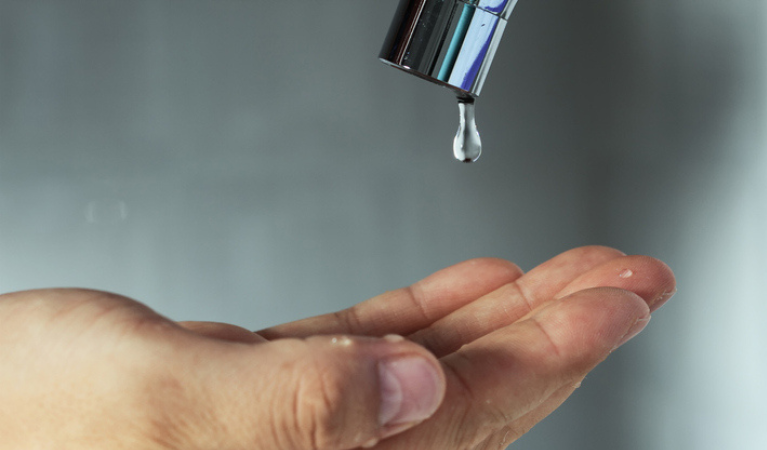Water is big news this summer. The prolonged heat wave has caused increased demand for water, but this increased demand could cause reservoir levels to drop and water supplies to become threatened.
Our estimated daily water usage is around 150 litres per day. If everyone could save even 5 litres a day, that could start to make a big difference.
Here are ten tips in which we can all save water this summer.
1. Have a shower instead of a bath
A typical bath uses around 80 litres of water, but a 5 minute shower is 40 litres – around half of this. And if you have an over-bath shower, you could even consider leaving the plug in the bath so that the water can be reused for other purposes (see tip 7 below).
2. Make your shower shorter
When you do take a shower, consider making it a little shorter than usual. We’ve just seen that a 5 minute shower uses around 40 litres of water. So you could reduce this by around 8 litres by showering for one minute less.
3. Turn off taps when not being used
Most of us are in the habit of leaving taps running even when we don’t need to. For example, when brushing your teeth. A running tap can use up to nine litres of water a minute. So if you turn it off whilst actually doing the brushing, this could save water.
It’s also a good idea to keep a jug of water in the fridge so that you have cold water to drink, rather than having to run the tap for a while to let the water chill.
4. Use less water when you flush
There are many ways of saving water when you flush the loo. Many toilets have an economy flush which is adequate for most uses.
Or you could get a water-saving device – such as a buffalo cistern bag – to save between one and three litres each time you flush the toilet. Find out more about water-saving devices at Save Water Save Money.
5. Use your washing machine and dishwasher less
Did you know that your washing machine can use up to 60 litres of water per cycle, and your dishwasher around 10?
So wait until you have a full load before using your washing machine or your dishwasher, and use the Eco setting wherever possible. Also consider washing up by hand, and minimising your use by using the same glass or mug throughout the day, with a quick rinse in between uses.
6. Fix leaks and drips
Now is the time to fix any niggling plumbing problems. If you have a leaking toilet or dripping tap, not only is this annoying but it can also gradually waste a lot of water, which remember all goes onto your water bill.
So to save water – and save money on your water bills – get things sorted.
7. Reuse water whenever you can
Try to reuse water whenever you can. For example, we mentioned in Tip 1 trying to conserve the water from your shower. You could use this – or bathwater – for something like washing your car.
Or when rinsing vegetables or fruit, save the water in a jug or bowl and use it for watering your plants.
8. Don’t use hose pipes to water your garden
Even if your area does not have a hosepipe ban, try to find other ways to water your garden. Garden sprinklers and hose pipes can use between 500 and 1,000 litres of water an hour! So use a watering can instead, especially if you can combine it with water reused from other purposes (see Tip 7).
Also when watering your garden, remember that morning is the best time to do this. Your plants and soil are more receptive to water in the cool of the morning, which means you will get more return for your efforts.
9. Find creative ways to clean your car
Some of us may view a hosepipe ban as a great excuse not to have to clean the car! But bear in mind that some features of your car – such as windows, mirrors, lights and number plates – do need to be kept clean for safety reasons.
One option is to rig up a hosepipe to a standing source of water such as a water butt. Or you can use buckets of water instead.
Another alternative is to gently wipe as much excess dirt and dust off the car as possible with a dry cloth, then look for a waterless cleaner to finish off. Have a look at products such as Diamond Shine, Greased Lightning or Dirtbusters, which all work by lifting contaminants away from the surface of without causing any scratches.
10. Collect rainwater in a water butt
Whilst there may not be much rain at all during a heatwave, it’s a great idea to fix up a water butt for future use. Water butts collect rainwater off your roof and can usually store about 200 litres of water. Given that the average roof collects around 85,000 litres of rain a year, this would be enough to fill your water butt 450 times!
Rainwater is ideal for watering your plants, and reduces the amount of treated water you use.
We hope that this article has been helpful in suggesting ways that you can save water in and around your home, and will also help you to save money on your water bills.
Do visit us here again soon for more financial and lifestyle tips from Loans 2 Go.


 Now is the time to start planning your financial goals for 2026
Now is the time to start planning your financial goals for 2026 
















